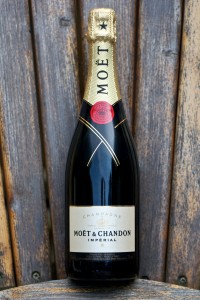
I know how to make this now. It's actually pretty easy.
I occasionally get people asking me about wine, and I don’t think it’s necessarily because I’m particularly knowledgeable (I’m not, and more on that in a moment) but it may be because, in spite of my lack of knowledge, I do tend to talk about it a lot. I’m interested in wine because it’s a complex subject that combines a huge amount of objective and subjective information, geography, chemistry, geology, and history, and drinking wine is also a great way to wrap up a day of not drinking wine.
When we were first betrothed, my wife and I had a few standard selections on which we relied, mostly Italians and Australians, some French, though my better half was perhaps a little more adventurous than I, bringing home something new because she liked the label or had chatted with a helpful LCBO employee. Over time we attended more than a few tastings, took a 3-evening course with Szabo and Szabo (John and Zoltan – amazingly, no relation), and followed the likes of Conrad Ejbich to then-hidden gems like Fielding Estates Winery and, from there, their neighbours Daniel Lenko, Malivoire and many others.
Finally, bolstered by encouragement from friends and the fact that the tasting and pairing events (while almost unanimously pleasant) tended to cover mostly the same ground (terroir if you will), I decided to apply for a night school wine course at a downtown college in Toronto. It promised to combine drinking and learning, which are two of my favourite things to do to my brain. Some of said supportive friends have been quite looking forward to reading my ongoing account of the experience (or so they have told me), and I have rewarded them by doing no such thing for six consecutive weeks of a twelve week course. You’re welcome.
Here, then, is a quick catch-up. The midterm was last Tuesday, and covered five full classes on France alone, barely, I’m certain, scratching the surface. We taste between seven and ten wines a night, and, surprisingly, the tastings are not really something I look forward to, because they are difficult. In spite of my brain’s capacity for absorbing and cataloguing information for future use, my palate is a flat-out moron. I can now explain to you in detail the Methode Champenoise and describe to you latin-named fungi and bugs that help and hinder, respectively, the vinification process. I cannot, however, reliably distinguish a Bordeaux from a Rhone in a blind tasting, which I aptly demonstrated on Tuesday evening, rather inconveniently during the midterm itself.
We will see how the grading went when I get my paper back next week. I have a suspicion that our (entertainingly pregnant) course instructor has placed less weight on the blind tasting component precisely because the palate cannot be educated as quickly as can the younger, thinkier part of the brain. I certainly hope that is the case, because while the iPhone flashcard software I used to study for the written component of the exam, at $3.99, was quite affordable, the Le Nez Du Vin complete aroma kit, at $550, is not.


What, may I ask, is a complete aroma kit? Can you get an incomplete aroma kit half price? And furthermore, don’t you think you should high-tail it to a) Bordeaux or b) Rhône to, you know, educate that palate? OK, maybe you need not high-tail it, but at least commence planning?
If you follow the link from Le Nez Du Vin you’ll end up at The Wine Establishment’s site, and while I was writing hyperbolically to make a point, the aroma kits are not cheap. There is a 24 aroma red/white kit for $295 though, which makes me think the complete kit includes aromas for oak casks and faults (imagine paying $160 for the enduring experience of 12 wine faults, which some must do). All in though, cheaper than a trip to France, and without the patient humiliation of international air security.